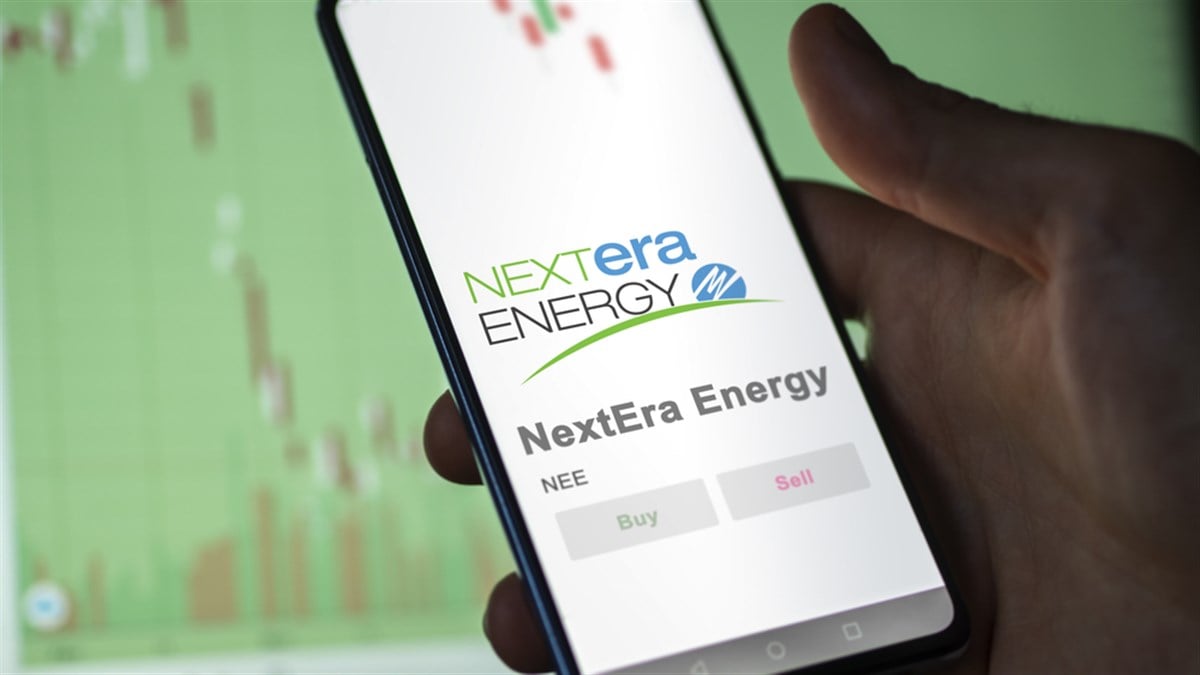
The renewable energy sector is experiencing unprecedented growth, a trend reflected in the record-breaking 2023 installation of 305 gigawatts (GW) of new solar capacity worldwide. This surge signifies a global shift towards cleaner energy sources, with solar and wind power playing a central role in decarbonizing the global energy sector. A combination of factors, including supportive government policies, technological advancements, and increasing consumer demand for clean energy, drives this shift.
Growth and the dynamic environment of the energy sector have created a fertile landscape for companies strategically positioned to capitalize on the growing demand for renewable energy. Several companies are leading the charge in this sector, and understanding their unique business models and strategies is crucial for investors seeking to navigate the complexities of the renewable energy market.
NextEra Energy: A Renewable Powerhouse
NextEra Energy (NYSE: NEE) is a leading force in the renewable energy sector. It is uniquely positioned as the largest electric utility in the U.S. while simultaneously being a major developer of renewable energy projects. This dual role gives NEE a significant competitive advantage, allowing it to leverage its massive scale (with over 16,800 employees), solid financial health, and extensive experience in traditional and renewable energy sectors.
NextEra's size enables it to achieve operational efficiencies, secure favorable terms with suppliers, and access capital at competitive rates. NextEra Energy’s financial stability is evident in its consistent profitability, reflected in a net income of $7.31 billion in the most recent fiscal year, and its strong balance sheet, supported by a robust debt-to-equity ratio of 1.12.
NextEra's high credit ratings inspire confidence in investors, enabling it to make long-term investments in renewable energy projects. Its diversified portfolio, encompassing both renewable and traditional energy sources, provides a balanced approach, mitigating risks associated with market fluctuations and technological disruptions.
NextEra is also actively investing in green hydrogen production, recognizing its potential as a key enabler of decarbonization in various sectors, including transportation, manufacturing, industrial production, and power generation. NextEra’s stock performance reflects investor confidence in its growth trajectory, with a current stock price of around $72 and an average stock price target of $76.50, suggesting a potential upside of 5%. NextEra’s analyst community generally holds a "Moderate Buy" rating, highlighting the company's solid fundamentals and growth prospects.
First Solar: Innovating in Thin-Film Technology
First Solar (NASDAQ: FSLR) is a prominent player in the U.S. solar panel manufacturing market, distinguished by its proprietary thin-film technology. This technology offers advantages over conventional crystalline silicon panels, particularly in hot and humid climates, delivering superior performance and higher energy yields. First Solar's commitment to domestic production, driven by a strategic alignment with the Inflation Reduction Act (IRA), positions it to capitalize on a growing market for U.S.-made solar panels.
The company’s manufacturing process is also recognized for its lower carbon footprint, which aligns with First Solar’s sustainability commitment. This eco-conscious approach resonates with environmentally conscious investors and customers, contributing to the company's brand image.
However, First Solar faces challenges from cheaper imports, mainly from China, which exert significant pricing pressure on the U.S. solar market. The company's reliance on specific raw materials and the need to manage a secure and stable supply chain are also key considerations for investors.
Despite these challenges, First Solar's growth potential is substantial, driven by the IRA's tax credits for domestic manufacturing and the expanding demand for U.S.-made solar panels. The company is executing a robust capacity expansion plan, with new manufacturing facilities coming online in the U.S. and India, enabling it to meet the rising demand for its products.
First Solar's stock has experienced significant volatility in recent months, driven by market uncertainties, including concerns about competition, the overall economic environment, and the potential impact of trade policy changes. Despite this volatility, the company's long-term outlook remains positive, supported by its technological leadership, strategic alignment with government policies, and growing market share. The company's stock currently trades around $260, with analysts holding a "Moderate Buy" rating. First Solar's financial results have captured the attention of investors. In the most recent fiscal year, the company achieved a net income of $830.78 million and a solid net margin of 28.75%. This strong financial performance, coupled with First Solar's commitment to innovation, sustainable practices, and a year-to-date stock price increase of 52%, fuels investor interest.
Sunrun: Bringing Solar to Homes
Sunrun (NASDAQ: RUN) is the largest residential solar installer in the United States, offering homeowners a convenient path to solar energy adoption through leasing and Power Purchase Agreements (PPAs). These financing models address a crucial barrier to solar adoption by eliminating the upfront costs associated with purchasing and installing solar panels, making solar accessible to a broader customer base.
Run's strong brand recognition and reputation for customer service provide a competitive edge within the residential solar market. The company has effectively implemented customer acquisition strategies, partnering with home builders and retail channels and leveraging online marketing campaigns to build a substantial customer base of over 800,000 Subscribers. Sunrun is also at the forefront of virtual power plant (VPP) development, harnessing aggregated home batteries to provide grid services and enhance grid stability, playing a critical role in the transition to a more distributed and flexible energy system.
Sunrun's stock performance, however, has been volatile in recent months, reflecting the challenges the company faces in a dynamic and competitive market. The company's stock price has declined year-to-date. This decline can be attributed to several factors, including regulatory changes affecting the economics of residential solar, rising competition within the residential solar market, and increasing customer acquisition costs.
One of the most significant challenges facing Sunrun is the evolving regulatory landscape for net metering. This policy allows solar customers to sell excess electricity back to the grid, offsetting their energy bills. Changes to net metering policies in some states have reduced the financial incentives for residential solar, impacting Sunrun's profitability and slowing the growth of its subscriber base.
Despite these challenges, Sunrun's growth potential remains strong, driven by the increasing electrification of homes and the growing integration of home batteries. As homes adopt more electric appliances and electric vehicles, the demand for residential solar and battery storage is expected to rise, creating new opportunities for Sunrun to expand its market reach and revenue streams. The company's focus on battery storage has been a key driver of its growth, as storage systems provide increased customer value through enhanced resiliency and control while delivering higher margins for Sunrun.
Riding the Renewable Energy Wave
The global renewable energy sector is experiencing unprecedented growth, a trend reflected in the record-breaking 2023 installation of 305 gigawatts (GW) of new solar capacity worldwide. This surge signifies a global shift towards cleaner energy sources, with solar and wind power playing a central role in decarbonizing the global energy sector. A combination of factors, including supportive government policies, technological advancements, and increasing consumer demand for clean energy, drives this shift.
Driving Forces Behind the Renewable Energy Surge
The global push for a sustainable energy future has resulted in supportive government policies worldwide, encouraging the rapid adoption of renewable energy sources. International agreements such as the Paris Agreement, aimed at limiting global warming to well below 2 degrees Celsius, are setting ambitious targets for emissions reduction and accelerating the transition to renewable energy. This trend is further amplified by growing consumer demand for clean and sustainable energy sources.
The Inflation Reduction Act (IRA) has emerged as a transformative force in the United States, providing substantial incentives for the renewable energy sector. This landmark legislation offers several key incentives, including the investment tax credit (ITC), the production tax credit (PTC), and the advanced manufacturing production credit (Section 45X). The ITC provides a 30% tax credit for qualifying solar projects, making solar energy investments more financially attractive for developers, businesses, and homeowners. The PTC incentivizes the generation of electricity from renewable sources, further boosting the economic viability of solar projects.
The IRA also prioritizes domestic solar manufacturing, aiming to foster the growth of a domestic solar manufacturing industry and reduce reliance on imports. Section 45X of the IRA provides tax credits for solar modules and components manufactured in the United States. This provision is expected to reshape the industry landscape, potentially creating new opportunities for U.S.-based manufacturers.
Complementing federal efforts are state-level Renewable Portfolio Standards (RPS). These standards, implemented across numerous states, mandate that utilities source a specific percentage of their electricity from renewable sources, creating a favorable regulatory environment for expanding renewable energy in the United States.
Technological Advancements Powering the Solar Future
Continuous innovation in renewable energy technologies is also driving the surge in adoption. The price of solar panels has fallen by more than 90% over the past decade, making solar energy a more affordable option for a broader range of consumers and businesses.
Energy storage technology is also rapidly advancing, and it is critical to integrate battery systems into intermittent renewable sources like solar. Batteries are becoming more efficient, longer-lasting, and cost-effective, enabling the storage of excess solar energy generated during peak hours for use when sunlight is unavailable.
The renewable energy sector is experiencing unprecedented growth, driven by multiple factors. Government policies like the IRA in the U.S. and state-level Renewable Portfolio Standards (RPS) are creating a favorable environment for solar energy development. Technological advancements in battery storage and grid integration make renewable energy more cost-effective and reliable. And finally, growing consumer demand for clean energy, fueled by environmental awareness and a desire for energy independence, propels the sector forward.
While participating in this dynamic environment presents challenges, each company discussed provides unique strengths and strategies and is well-positioned to capitalize on the continued expansion of the solar energy market. Investors seeking to participate in this transformative journey should carefully consider the fundamentals of these companies, analyze their financial performance, and assess their ability to navigate the complexities of the renewable energy sector. The future of energy is evolving rapidly, and the companies that embrace innovation and adapt to changing market dynamics are poised to lead the way toward a sustainable energy future.




